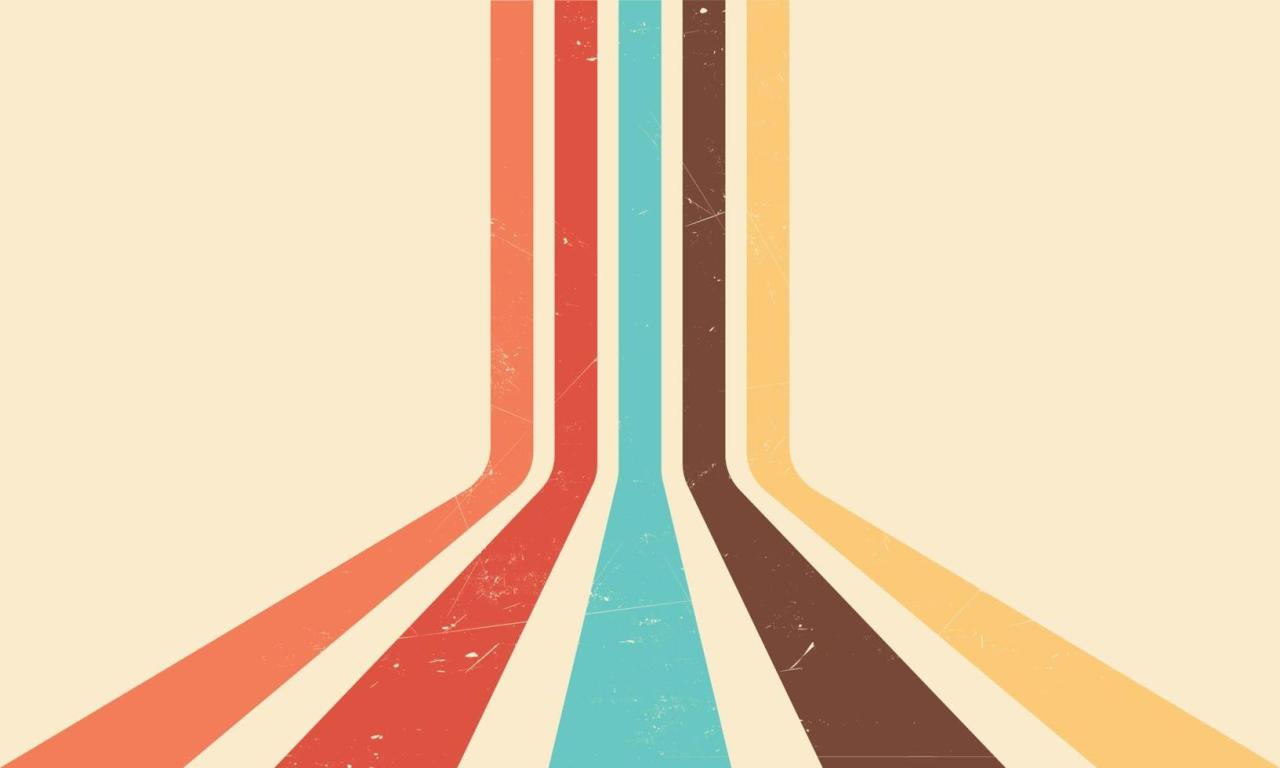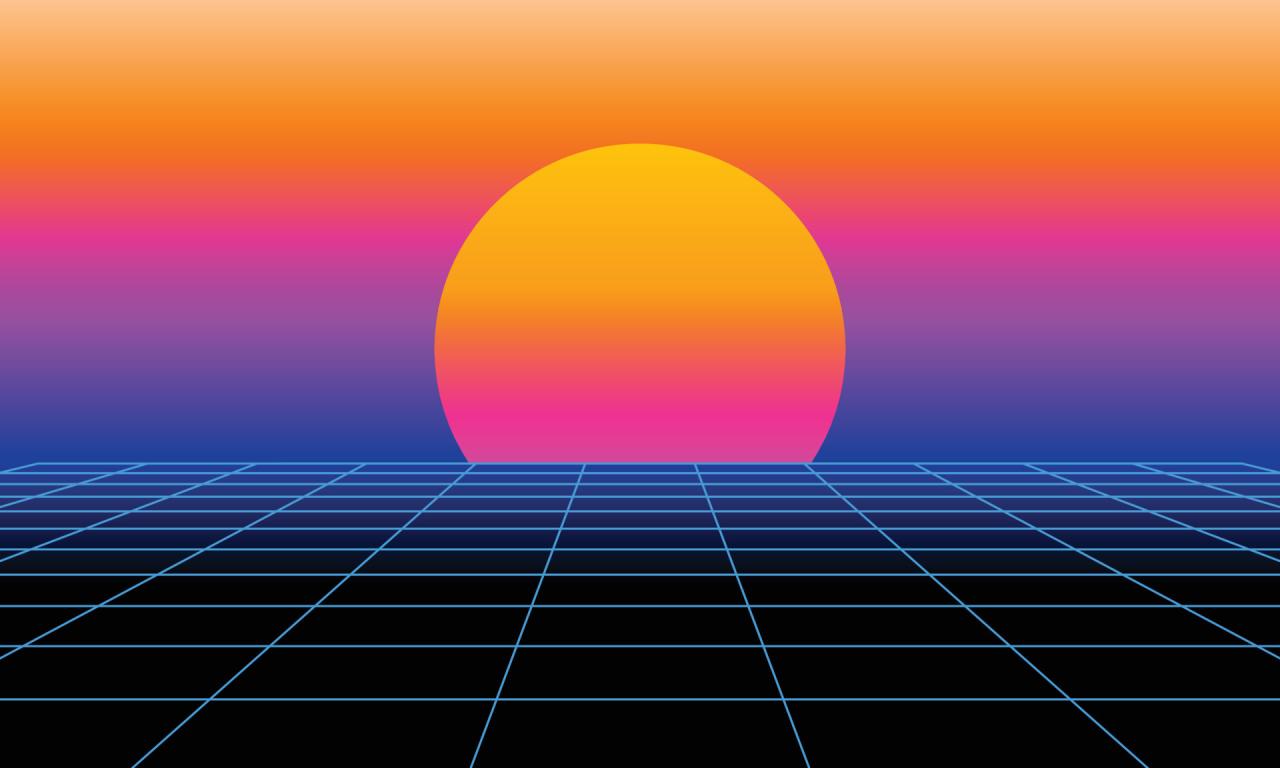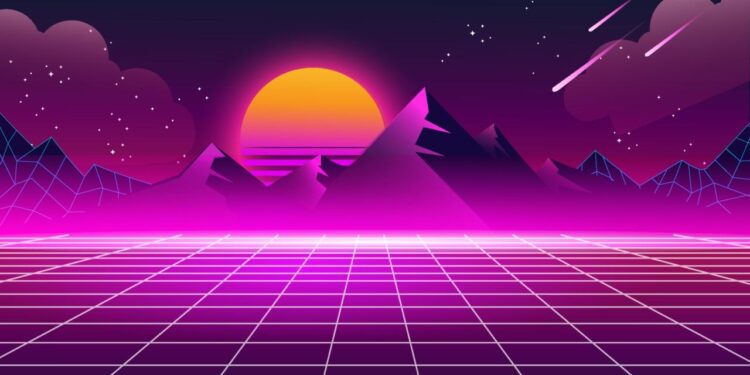In a digital world that is in a constant, relentless pursuit of the new, the next, and the now, a powerful counter-movement is challenging the very conventions of what is considered “cool.” The design world, from graphic interfaces to fashion and interior spaces, is experiencing a major resurgence of retro aesthetics. This is not a simple repetition of the past but a profound re-imagining of it, a deliberate blending of the aesthetics of a bygone era with the technology and sensibilities of the present. This comprehensive article delves into the profound impact of retro aesthetics, exploring the foundational principles and psychological underpinnings of this movement, the diverse applications that are already reshaping our world, and the immense opportunities and critical challenges that lie ahead as we embrace a new, more nostalgic, and more human-centered design philosophy.
Historically, design has been a linear progression, with each era seeking to break free from the past. The ornate curves of Art Nouveau gave way to the clean lines of Art Deco, which in turn gave way to the brutalist forms of the post-war era. The digital world has followed a similar trajectory, from the skeuomorphic designs of the early internet to the flat, minimalist aesthetic that has dominated the last decade. But the relentless pace of digital progress, with its constant updates and its sense of a fleeting, disposable present, has created a new kind of fatigue: the fatigue of the future. We are no longer just looking forward; we are looking back. Retro aesthetics offer a powerful antidote to this, a sense of familiarity, comfort, and nostalgia in a chaotic and unpredictable world. It is a return to a more analog, more tactile, and more human-centered way of living and designing.
The global interest in retro aesthetics is skyrocketing, with new blogs and social media accounts dedicated to the aesthetic. The principles of retro are being applied to a wide range of fields, from the revival of cassette tapes and vinyl records to the use of vintage-inspired fonts in web design and the re-introduction of classic color palettes in fashion. This is more than a design trend; it is a profound societal shift, where we are beginning to redefine our relationship with our past and our present. The retro aesthetic revolution is here, and it is the new blueprint for a more nostalgic and more human-centered world.
The Pillars of Retro Design

The power of retro design is not a single piece of technology but a sophisticated and integrated philosophy that is built on a set of foundational principles that seek to evoke a sense of nostalgia and comfort.
A. The Principle of Nostalgia and Emotional Connection
The most powerful and direct principle of retro design is its ability to create a sense of nostalgia and an emotional connection. The colors, fonts, and textures of a bygone era can trigger a powerful memory of a simpler, more innocent time. This can create a sense of comfort, a feeling of security, and a positive emotional response that is incredibly powerful. A brand that uses a retro aesthetic, for example, is not just selling a product; it is selling a memory, a feeling, and a sense of connection to a time that is long gone. This is a shift from a design that is a functional tool to a design that is an emotional one.
B. The Principle of Authenticity and Craftsmanship
In a world of mass-produced, digital-first products, a retro aesthetic can evoke a sense of authenticity and craftsmanship. The design of a product that is inspired by the past can give a sense of a handmade, tactile, and a more human-centered approach to design. The use of a vintage-inspired font, for example, can give a sense of a brand that is more traditional, more grounded, and more trustworthy. This is a shift from a design that is a sleek and a soulless product to a design that is a work of art, a powerful testament to a designer’s unique and unfiltered vision.
C. The Principle of a Limited and a Unique Color Palette
The retro aesthetic is often defined by a limited and a unique color palette. The use of faded pastels, muted earth tones, or vibrant, pop-art-inspired colors can all evoke a specific era and a specific feeling. A brand that uses a color palette that is inspired by the 1970s, for example, is not just using a set of colors; it is using a visual language that can communicate a sense of a time, a place, and a feeling. This is a shift from a design that is a random collection of colors to a design that is a carefully crafted and a meaningful expression.
D. The Principle of Tactility and Analogue Forms
In a world of flat, digital screens, a retro aesthetic can evoke a sense of tactility and analogue forms. The use of textures, such as grain and paper, can give a digital product a sense of a physical and a tangible reality. The use of a vintage-inspired button or a rotary dial on a website can give a user a sense of a physical and a mechanical interaction, a powerful and a nostalgic feeling in a world of a sleek and a seamless experience. This is a shift from a design that is a digital object to a design that is a physical and a tangible one.
Applications and Benefits of Retro Design
The principles of retro aesthetics are being applied to a wide range of industries and digital projects, creating tangible benefits for creators and a unique experience for users.
A. A Unique and Memorable Brand Identity
In a world where every brand is a sleek, minimalist, and polished website, a retro aesthetic can be a powerful tool for creating a unique and memorable brand identity. A brand that uses a retro aesthetic is making a statement, a clear message that it is not afraid to be different, that it is authentic, and that it has a story to tell. This can lead to a powerful connection with an audience that is tired of the same old design aesthetic, and a brand that is a leader in a new and unfiltered era of design.
B. A Powerful Tool for Artistic and Creative Expression
For artists, designers, and creative professionals, retro aesthetics are a powerful tool for artistic and creative expression. It is a canvas where the rules of traditional design do not apply, a place where a creator can experiment with new forms, new layouts, and new aesthetics without a fear of breaking the rules. A retro-inspired design is often a work of art in its own right, a powerful testament to a creator’s unique and unfiltered vision. This is a shift from a design that is a commercial tool to a design that is a creative one.
C. A Sense of Trust and a Connection to the Past
In a world of constant change and a feeling of a fleeting present, a retro aesthetic can evoke a sense of trust and a connection to the past. A design that is inspired by the past can give a sense of a brand that has been around for a long time, that is a trusted and a reliable partner in a world of a constant change. This can lead to a powerful connection with an audience that is looking for a sense of stability and a sense of a connection to a time that is long gone.
D. A New Philosophy of Honesty and Authenticity
The most profound benefit of retro aesthetics is its focus on a new philosophy of honesty and authenticity. It is a rejection of the idea that a design must be a perfectly crafted and curated experience, a return to the raw, unfiltered, and often-ugly reality of the early internet. A retro-inspired design is a statement, a clear message that a brand is not afraid to be itself, that it is honest, authentic, and unafraid to challenge the status quo. This is a new and powerful philosophy of design, a blueprint for a more human-centered web.
Overcoming Challenges to a Nostalgic Future

Despite the immense promise of retro aesthetics, its development is not without significant challenges that must be addressed.
A. The Challenge of Longevity and Trend Cycle
Retro aesthetics are a powerful rebellion against a polished and a seamless aesthetic, but they are also a trend. The challenge of longevity and the trend cycle is a major concern. What will happen to a retro-inspired design when the trend is over? Will it look dated and uninspired? The challenge is to create a design that is not just a passing trend, but a timeless aesthetic, a new philosophy of design that will be a blueprint for a more nostalgic and more human-centered world for years to come. This is a shift from a design that is a quick fix to a design that is a long-term investment.
B. The Challenge of Usability and User Experience
While a retro-inspired design can be a powerful aesthetic statement, it can also be a major challenge for usability and user experience. A design that is inspired by the past might be difficult to use in a modern, mobile-first context. The lack of a clear navigation system, the jarring color palette, and the unfiltered typography can all lead to a user experience that is frustrating and confusing. The challenge is to find a balance between a retro aesthetic and a functional one, to create a design that is both a work of art and a utilitarian tool.
C. The Challenge of Authenticity and Meaningful Connection
The most significant challenge for retro aesthetics is the issue of authenticity and a meaningful connection. A brand that uses a retro aesthetic, but has no real connection to the era it is evoking, can be seen as a cynical attempt to exploit a sense of nostalgia. The challenge is to create a design that is not just a copy of the past, but a genuine and a meaningful re-imagining of it, a design that has a story to tell and a connection to a real and a human-centered purpose. This is a shift from a design that is a marketing gimmick to a design that is a work of art.
D. The Challenge of a Single and a Fixed Aesthetic
Retro aesthetics are often defined by a single and a fixed aesthetic, a design that is tied to a specific era. This can be a major challenge for a brand that needs to evolve and to adapt to a changing market. The challenge is to find a way to use the principles of retro in a way that is both a powerful aesthetic statement and a design that is flexible and adaptable. This will require a new kind of design thinking, one that is built on the principles of a nostalgic aesthetic, but with a clear understanding of the needs of a modern brand.
Conclusion
In conclusion, the resurgence of retro aesthetics is not a passing trend; it is a transformative paradigm that is fundamentally reshaping our approach to design. By leveraging the power of nostalgia, authenticity, and a new aesthetics of a limited color palette and a tactile feel, we are moving beyond a world of sleek, minimalist interfaces and into a new era of comfort, familiarity, and a human-centered design. The foundational principles of this revolution are all working in synergy to create a new way of living and working. The applications of this design philosophy are incredibly diverse and profound, promising to revolutionize everything from brand identity and creative expression to the way we experience a digital product.
The promise of retro aesthetics is immense. It offers a solution to some of the most pressing challenges of our time, from the sense of a fleeting present and the fatigue of the future to the lack of authenticity and trust in our digital lives. It holds the potential to create a future where our designs are not just a tool for commerce, but a work of art, a new kind of digital space that is a reflection of our most nostalgic and our most human-centered selves. This is not just a technological upgrade; it is a blueprint for a better and more human-centered future, one where we can use the power of design to re-establish our connection to our past.
However, as we embrace this new era, we must also be mindful of the challenges that lie ahead. The issues of longevity, usability, and the trend cycle are not footnotes; they are central to the responsible development of retro aesthetics. We must navigate this path with a new ethical framework, one that ensures that this powerful design philosophy is used to empower humanity, not to control or exploit it. The retro aesthetics revolution is a journey that will be defined not just by what we can copy from the past, but by what we can create with the opportunity to build a new, more authentic, and more human-centered world. The future is a reflection of the designs we create today, and the most exciting part of this journey is that we are all a part of it.






